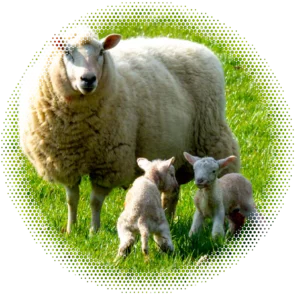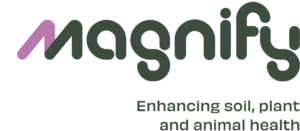
Spring News Update 2024
We have had requests for another newsletter as many found the last one informative. Browse the headings / key points and check out the stories of interest.
Sum up for the Season and Boosting Growth
Well it’s certainly been a cold start to the year! We’ve had more snow in September than throughout all Winter – and growth rate data is reflecting this. Southland is growing about 1/3 of what they grew 2 years ago.
On the positive, one dairy client has been experimenting with Magnify + Gibberellic Acid. An early application has boosted growth over 250% with an extra 770 kg grown over the six weeks prior to 26 Sept. The cost per kilo so far is 16 cents/kg DM which includes $30/ha for application. If this was applied with a helicopter or drone it would be 19 cents/kg. John has been able to hold his average cover without extra supplements.
Call us to find out what we can do for your situation 0800 66 88 100.
After Prolonged Drought
Soils – prolonged dry periods are very hard on soil microbes. Soil life is adapted to dry periods lasting roughly 2-3 months. When dry periods last 4-6 months, excess death occurs including the bacteria and fungi that create soil structure. We are observing that soils with large soil aggregates have fared worse – – and loss of root mass and compaction has been more pronounced than with soils with smaller aggregates. The soil with smaller aggregates is recovering better. Roots are back to 90% of pre-drought root depth and soil structure is linked to this. Soil fungi are visibly present even after just one application of Magnify. It takes many years to build up enough resin-producing bacteria to keep soil soft throughout ‘six month dry periods’.
Plant Growth – Bacteria, fungi and creatures like protozoa and ciliates are all harmed by the long dry periods. This can slow down the decay cycles. This means that although there is ‘potentially available nitrogen’ in the soil, there is not the normal decay activity to release it to get a strong Spring flush. The external symptoms are more prominent urine patches and dull looking grass in between. Natural decay systems do recover but this may not be fast enough to meet Spring demand. Therefore (for some clients) we have been adding some liquid nitrogen to Magni-Grow this Spring. Growth-rate data shows an increase of over 200 % from the paddock data it has been applied to. By comparison, historic NZ data indicates liquid nitrogen alone would produce about 20-30% gains. The natural decay cycles start to increase when soil temperatures are above 8 degrees, which is why Magnify targets soil temperatures.
Overseer Gaps
We have identified what we believe to be gaps in Overseer and have forwarded this information / advice to them.
If successfully recognised, it may start the necessary process towards fully acknowledging pastures with high ME and nitrogen levels closer to what a cow can process (2.5 % N). Really big reductions in leaching and nitrous oxide emissions should occur on your overseer record. Since the 1950’s, dietary nitrogen levels have been clearly understood to control urine nitrogen output in an exponential manner, yet no one has received any education from the main institutions on this.
Monitored Well data in Canterbury continuing to rise
– but Magnify clients bucking the trend
Many of you have achieved Regional Council leaching targets which are presented in kg N/ha, however drinking water standards are in mg nitrates/L and the two don’t equate easily. Five years ago ECAN started an extensive Well-monitoring programme. I was given a summary of the Well data for the Ashburton Lyndhurst Irrigation (ALI) area. In spite of nitrate caps being in place since 2021, the data for 50-100 metre Wells has risen by 1.5 mg nitrates to 9.5. I was told continued irrigation consent requires targets of 6.9 mg/L to be met.
In comparison, we have been monitoring John and Jacky Tanner’s 25m Well and – in spite of running 3.8 cows/ha and having soil with very high nitrate leaching susceptibility – they have reduced over 1 mg/L over 2 years. This requires the nitrates in the drainage water to be as low as 2-3 mg/L. We continue to collect urine samples at Tanners and they contain a fraction of the nitrogen / urination compared with the historic literature (range is 2-6 gm N/urination compared to 26 gm N/urination). Note Tanners low nitrates are in keeping with the 90% reduction in leaching we observed in a leaching study.
We have also tested the stream entering Lawtons’ farm in Southland (which we have been treating for 16 years 20 years). The nitrates dropped 5 points when travelling through the 500 m stretch of their farm, yet increased again over the 500 m beyond their boundary. The drainage coming through Lawton’s soils was less than 2 mg/L NO3 N.
No irrigation company – nor ECAN – have forwarded projections of expected declines, so we did our own experiments. Background info : the drainage from an irrigated farm is roughly 200 mm. That gets diluted by the ground water which (in a 40 metre Well) is roughly 10 m of water between the alluvial Canterbury stones. Changes in medium to deep wells are therefore slow and often mistaken for no significant change. Reductions are also slow, depending on the dilution factor. Our graphs indicate the average leaching from the ALI is still over 20 mg/L nitrate nitrogen (NO3 N) which is over 40 kg N/ha. The process of diffusion (where a stronger concentration naturally moves towards a lesser concentration) means there should be immediate changes when the nitrates going in the top are much lower concentrations than the nitrates in the Well depth. The experiments and changes in the Tanners Wells indicate there is upward diffusion of nitrates yet the rhetoric from ECAN’s PR statements is nitrates will get worse before they get better.
Note: Overseer’s most recent review still showed leaching data can be 60% inaccurate.
Reducing Urea to 90 kg N / ha plus Magnify without loss
I’ve been tabling weekly grass growth data for Tanners and Lincoln University Dairy Farm for 4 years. Analysing the weekly grass growth data shows the Tanners have grown as much dry matter as Lincoln University for the last 3 out of 4 years. The Tanners have poor soils and irrigation capacity in comparison to Lincoln University Dairy Farm, yet have kept up (except in hot windy conditions) using just 90 kg N/ha/yr compared to 170 kg N/ha at Lincoln. Their production is also well above the LUDF. Congratulations to the Tanners on outstanding production and sustainability measures.
Comments have also come from an Oxford dairy farm that they are growing more grass with Magnify and 90-100 kg N/ha than they were using over 200 kg N/ha.
Magnify’s independent and in-house grass measurements show 1000-3200 kg extra dry matter from a single application. That’s the equivalent to 100-150 kg N/ha. This makes it not only possible to reduce Urea in half but to also grow even more grass.
A recent analysis showed the use of Magnify products is half-the-cost on a ‘per kilo of dry matter’ basis.
Global Fertiliser Prices
After huge price increases in recent years, 2024 fertiliser prices are projected to ‘calm’ but this still includes a yearly 3.8% annual increase from today’s prices. Fertiliser is a major cost in farming operations but it also creates many other costs with respect to animal health and reproduction (and the flow-on effect to staffing required to deal with lame and sick cows). Thus the cost is far higher than just the fertiliser price. Magnify is for these times – growing grass with less fertiliser yet improving profits substantially. We’ve done some bold things to fertiliser budgets in the past and have been successful 100% of the time.
Call us to see what we can help you to achieve! 0800 66 88 100
Magni-Lamb producing better Lambs
Magni-Lamb and Magni-Lamb Plus have been rapidly growing in sales and distribution. In the last week we’ve had 3 people comment they have done their own trials and found Magni-Lamb was better than the high mineral supplement they had been using. Average growth advantages have been over 40 gm/day. Lamb prices are set to be $8-9 / kg CW. Over 90 days that would equate to a return of over $12 / lamb. The return on investment is similar, regardless of whether you calculate by extra carcass weight or by feed savings. The feedback from farmers has been exceptional. You can start Magni-Lamb at tailing and then every 2-4 weeks.
Preparing Winter Feed Crops
Add 2-3 litres of Magni-Grow in with the Roundup when spraying out paddocks for feed crops. Historical feedback is that this adds around 4 ton of dry matter to the crops.
Special Promotion
When placing your next MagnifyNZ product order, mention this newsletter and go into the draw for a special Christmas pack, including a portable stainless steel BBQ and utensils!
Best wishes from the MagnifyNZ team
Prepared by Scott Hobson, B.Ag Sc.
Director, MagnifyNZ Ltd





